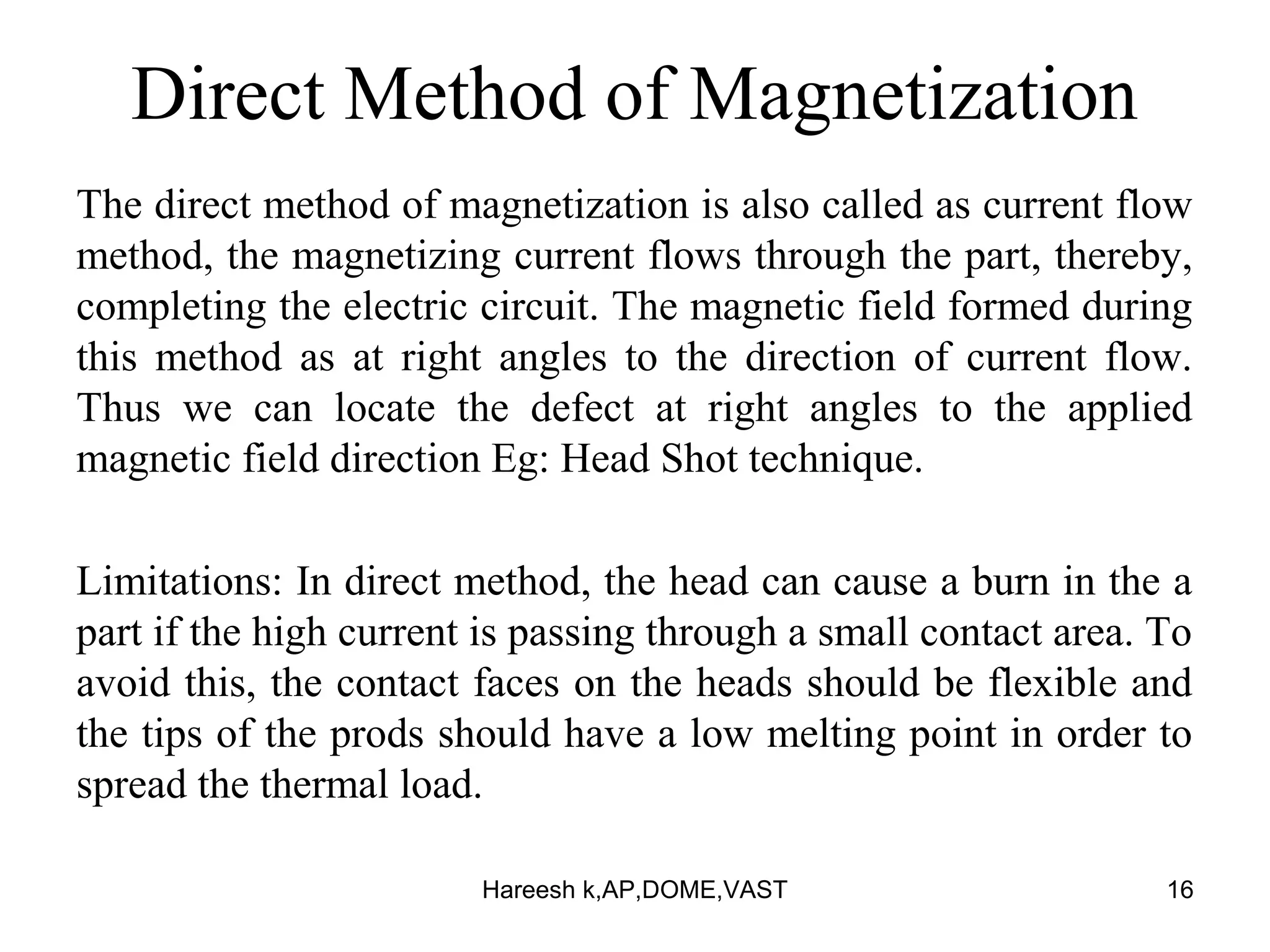Magnetic particle inspection is a non-destructive testing method used to detect surface and near-surface defects in ferromagnetic materials like iron and steel. It works by magnetizing the material and applying iron-based particles that are attracted to discontinuities in the magnetic field caused by defects. The document discusses the basic principles of magnetism involved, different magnetization techniques like direct current and indirect methods, factors that affect sensitivity, and common applications in industries like aerospace, automotive, and petrochemical. It also outlines advantages like being quick and inexpensive, and disadvantages such as limitations to ferromagnetic materials and potential for non-relevant indications.
































